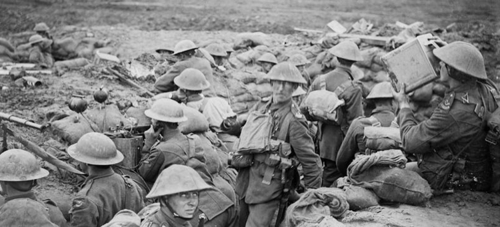19 September 2017
8 facts about the Battle of the Menin Road Ridge
Wednesday 20 September marks 100 years since the Battle of Menin Road Ridge began in 1917. Here are 8 facts about the battle.

- WW1's Battle of the Menin Road Ridge marked the renewal of the Third Battle of Ypres. A period of poor weather in August had caused a hiatus in the offensive, but following better weather in September the British Army was able to re-launch the attack with an assault on the German positions on the vital high ground of the Gheluvelt Plateau astride the Ypres-Menin Road.
- Command of the offensive had passed to General Herbert Plumer, commander of Second Army, which included two Anzac Corps formed of Australian and New Zealand units.
- At the start of the battle, British artillery unleashed an incredibly concentrated bombardment – there was one gun for every five yards of ground. Objectives for the attack were limited to within 1,500 yd, well within range of the British artillery.
- Known as ‘bite and hold’, the plan was for British Empire troops to attack under the cover of a heavy artillery bombard, take a bite out of a section of German defences and then quickly prepare the captured position to hold it against the inevitable German counter-attack.
- Elements of 11 divisions including the 1st and 2nd Australian divisions attacked along roughly 15km of front. The attack was largely successful despite strong German defences including concrete block houses and fierce German counter-attacks.
- Some of the severest fighting took place in the south around an area known as ‘Tower Hamlets’, just west of Gheluvelt village. Despite repeated attacks by the British, German troops were still in control of the area by nightfall.
- Despite obtaining most of their objectives, the battle still proved costly for the British Army. The British Official History places British casualties for 20–25 September 1917 at 20,255 wounded, killed or missing. The CWGC commemorates nearly 8,000 servicemen of the British Empire in Belgium who died during the period.
- Along the Ypres-Menin Road are three CWGC cemeteries, Menin Road South Military Cemetery, Birr Cross Roads Cemetery and Hooge Crater Cemetery, which together contain the graves and memorials of more than 8,400 servicemen of the British Empire of whom over 4,000 remain unidentified. Others are buried elsewhere in the salient or are commemorated by name on one the CWGC memorials to the missing.
Photo credit: Battle of the Menin Road Ridge. 13th Bn, DLI waiting to attack towards Veldhoek, 20 Sep 1917. © IWM Q 5966

